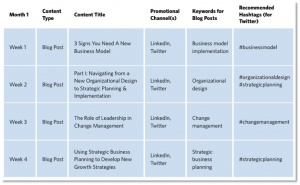by Aleck Schleider , Columnist, July 11, 2016
While Americans are busy planning their summer vacations, travel marketers are busy looking for new ways to reach them with the draw of sight, sound and motion. Palm trees swaying in ocean breezes, children splashing in water, tanned couples running on the beach, a tall icy beverage—these are the images that have been used to court would-be vacationers for decades.
Traditionally, these images lived on our televisions. Today, however, with video content ubiquitous across devices—from mobile and OTT, to laptops and tablets—travel marketers recognize that TV alone may not be enough. To fight against the effects of fragmented viewing, there are myriad opportunities to complement TV strategies with data targeting and cross-screen amplification.
But ample amounts of digital spend, few marketers are embracing true cross-screen media plans that manage traditional channels like TV, in tandem with digital formats like video.
Below are five best practices to do just that.
1. Rethink digital media
According to eMarketer, the majority of digital travel ad dollars go to search (55%), followed by display (34%), with only about 10% going to video. As this allocation suggests, digital is primarily used as a direct-response channel. Yet, as TV viewing is increasingly done online, digital advertising can can be used to build consumer experiences through engaging video creative that complements TV campaigns.
2. Extend programmatic benefits beyond display
According to eMarketer, more than three-fourths of digital display ads will be programmatic due to the application of data to better target and segment, as well as greater scale and efficiency. These same benefits can be recognized in video and, to a growing degree, television. Identifying and targeting strategic audiences is particularly important in travel, where ~5% of an airline’s passengers can make up 25% of its revenue, per Forbes. Targeting can also be used to identify segments such as leisure or business consumers, international travelers, or cruise enthusiasts—each with a different set of needs.
3. Let digital data inform TV buys
Looking at the role of data in targeting, an important opportunity is applying digital insights to television buys. Highly accurate online travel data sources, traditionally only available in digital, can now be tied to television viewing. For instance, a marketer could determine the best programs, networks or dayparts to target frequent visitors to their or a competitor’s site. The cost to reach a strategic target on TV can be greatly reduced, and efficacy improved. In fact, through the use of data-infused TV buying, we routinely see upwards of 20% increases in reach against advertisers’ strategic targets for the same budget.
4. Let TV data inform your digital buys
Similarly, by using TV campaign data, travel marketers can target consumers digitally based on their exposure to TV commercials. While this link can achieve a variety of objectives, one important use is to extend a TV campaign’s reach by targeting those unexposed or lightly exposed to a message. In one example, a travel marketer used online video to extend reach after its TV schedule’s reach began to max out. By pinpointing those not exposed to the TV campaign, online video drove 8% of the overall incremental reach in the second half of the TV schedule.
5. Achieve greater conversion rate with cross-screen planning strategy
Media consumption habits have been shifting for the last decade, but the dramatic spike in multiple-screen viewership has made cross-screen advertising crucial for marketers to maximize the return on their spending. We’ve seen tremendous benefit to marketers who employed cross-screen TV and video strategies. In one example, a large hotel chain targeted consumers with online video using behavioral and demographic segments, as well as segments based on TV viewing. Through a cross-channel analysis, we were able to compare the impact of TV and digital exposure on viewers’ online activity. We found that site visits for the advertiser increased five times among consumers exposed to both their TV and video campaign together.
Today, developing smart, holistic strategies targeting travelers across TV and video is crucial in order to reach an adequate number of the right consumers, at the right cadence, to drive action—up to and including conversions. Fortunately, the tools and best practices now exist to allow travel marketers to thrive in this new, converging world of screens.
MediaPost.com: Search Marketing Daily
(33)







